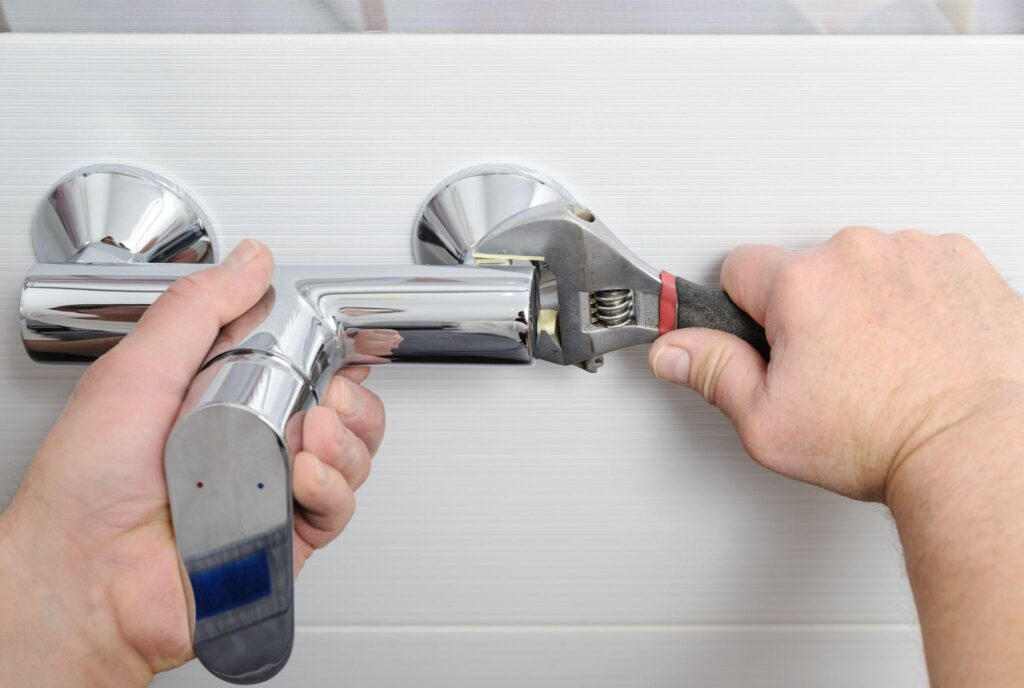ADA Shower Valve Requirements to Consider When Upgrading

If you live with seniors or people with disabilities, you might be considering making your bathrooms ADA-compliant. An ADA-compliant bathroom is more accessible for all people and a lot safer for everyone.
You can change shower enclosures, add grab bars, and install other accessories to make your bathroom safer. Additionally, you might consider replacing your shower valves.
What Are Shower Valves?
A shower valve works as a thermostat for your shower. It mixes hot and cold water to ensure the temperature is constant. That means there will be no random increases in temperature, which can lead to burns and scaldings. It is an essential part of an accessible shower or bathtub.
These devices are usually placed behind walls, making them hard to access for some people. An ADA-compliant shower is more accessible and easy to adjust, even for a senior or someone with reduced mobility.
How to Find the Perfect ADA Shower Valve
First, you will need to count the number of shower heads and faucets. The more taps and shower spray units the bathroom has, the more power you’ll need from your shower valve.
If you have a traditional shower head and a hand-held model in the same shower, you’ll need a ¾” shower valve.
Alternatively, if you only have one shower head in the shower, you can choose the basic size. A ½” shower valve will give you the necessary power and safety features for a more accessible shower.
ADA Requirements for Shower Valves
The ADA (Americans with Disabilities Act) provides specific rules and requirements for bathrooms. It covers showers, shower tubs, and bathtubs. Therefore, you must follow specific instructions to install and use your shower valve.
These are the ADA shower valve height and installation requirements:
- The minimum height for an ADA-compliant shower valve is 38 inches above the level of the floor. Meanwhile, the maximum height should be no more than 48 inches above the finish floor. You have a 10-inch leeway to install your shower valve.
- You can install your shower valve on the back wall of your shower or either sidewall. You can choose the more convenient place for you and the other users.
- In a 3 by 3 feet shower stall, the valve controls should be mounted on the wall opposite the seat. That way, you avoid unnecessarily using the shower floor, which can be slippery and dangerous.
- Another requirement is the control operation. The ADA indicates that your shower valve should be operational with only one hand and shouldn’t pinch or bind the skin. In other words, no more than 5-foot-pressure should be used to operate the valve.

Additional ADA Requirements for Accessible Showers
The valve is just one small part of your shower. So, to make it more accessible, you must consider other factors.
Here are the other ADA requirements for an accessible shower:
- The shower should be big enough to allow a shower stall or wheelchair inside. This is usually a minimum of 60″ x 30″ for better maneuverability.
- Depending on the shower size, you’ll need to add one or more grab bars. They can help users get in and out of the shower without slipping. An 18″ grab bar on your control wall is the minimum.
- You can install other grab bars on the side walls. It will depend on the final user and the size of your shower.
- The threshold height of your shower should be no taller than ½”. A higher threshold can make accessibility with a wheelchair more difficult.
- Shower seats can make your shower much safer. The chair should allow easy access to the shower controls, and a hand-held shower spray unit should be installed too.
Invest in the Best ADA-Compliant Shower Valve with American Bath Enterprises
Are you looking for the most reliable ADA-compliant valves for your shower? Look no further than American Bath Enterprises. We have a wide selection of shower enclosures and other products to help increase your bathroom’s safety. To learn more about our high-quality and ADA-compliant shower systems, contact us at (888) 228-4925!



